Over the past year or two, we have collected quite a few Astrophytum Asterias. In fact, our first cacti were two Astrophytum Asterias which we bought from a local grower! I’ll try to name them but it does not really do justice to the variations they come in. Click on the photos for a closer look.





















Astrophytum asterias
Astrophytum asterias is a species of cactus native to small parts of Texas and Mexico. They are also known as sand dollar cactus, sea urchin cactus or simply just astro among the cacti and succulents hobbyists. The two photos below are some of their common forms.
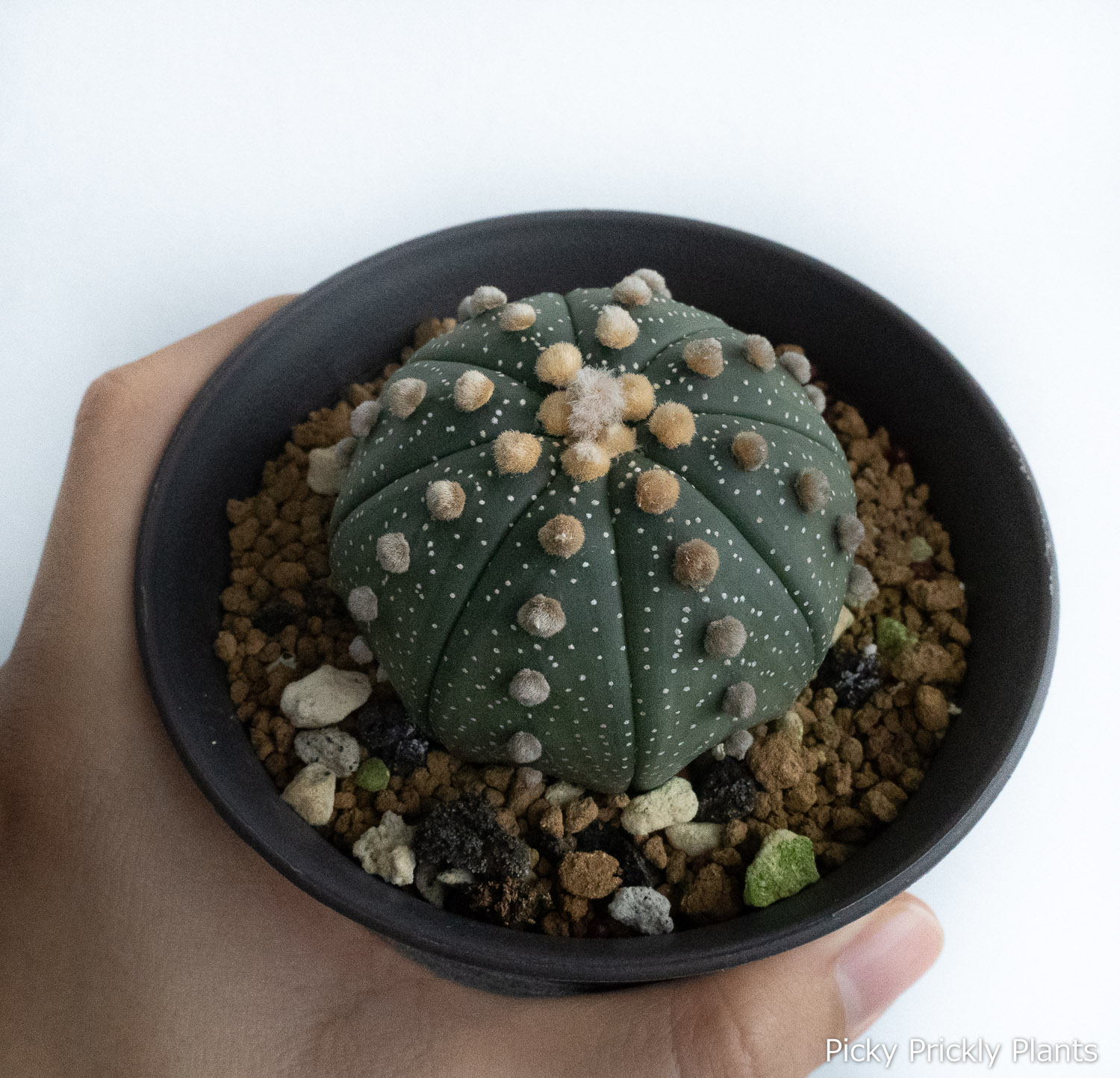
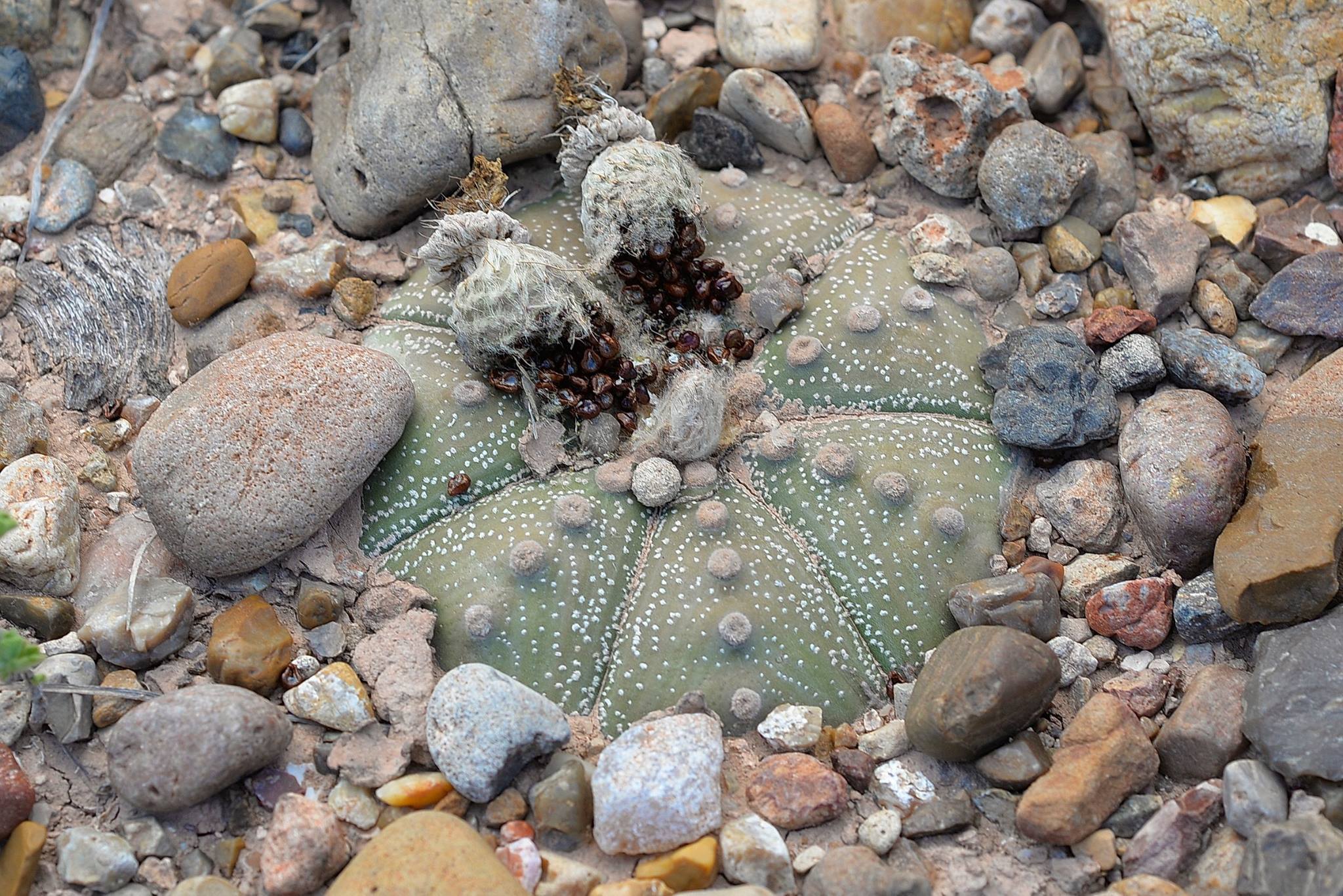
The cactus is characterised by the following:
- Flat and round disc that is divided into sections known as ribs
- No spines/thorns but has round tuffs of hair known as areoles
- Green body with small white speckles
- Flowers are commonly yellow with a red bas
- Fruits are green to pink with a hairy body
- Seeds are 1 mm size and have a shape of a bowl
Body/Speckles variations
Astrophytum asterias var. nudum
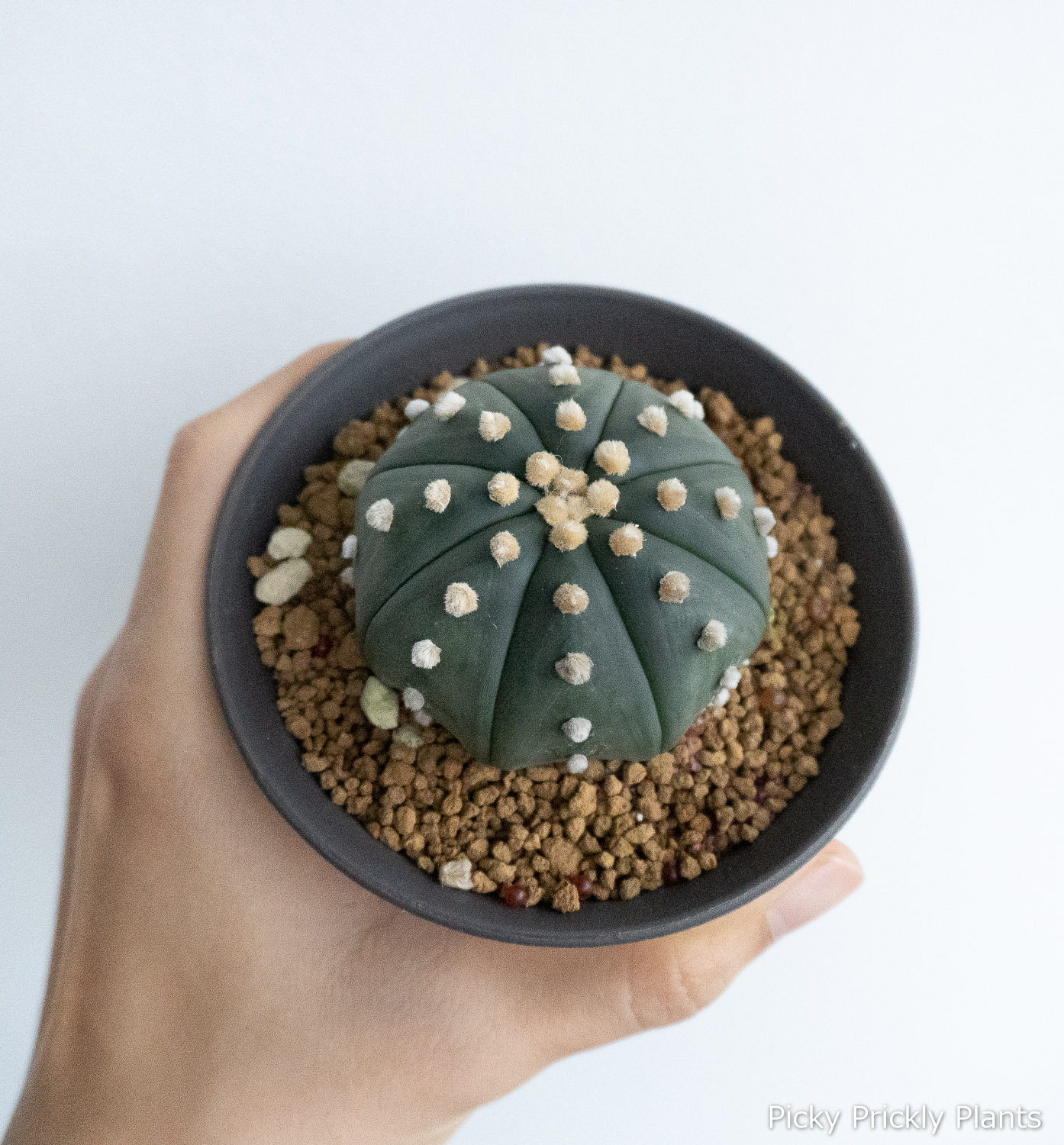
In Latin, nudum literally means naked. A naked astrophytum, as you can guess, is one that does not have white speckles. They can be rarely found in the wild but they have become common in cultivation. Most people that are getting into Astrophytums likely have these as their first few.
Astrophytum asterias cv. super kabuto
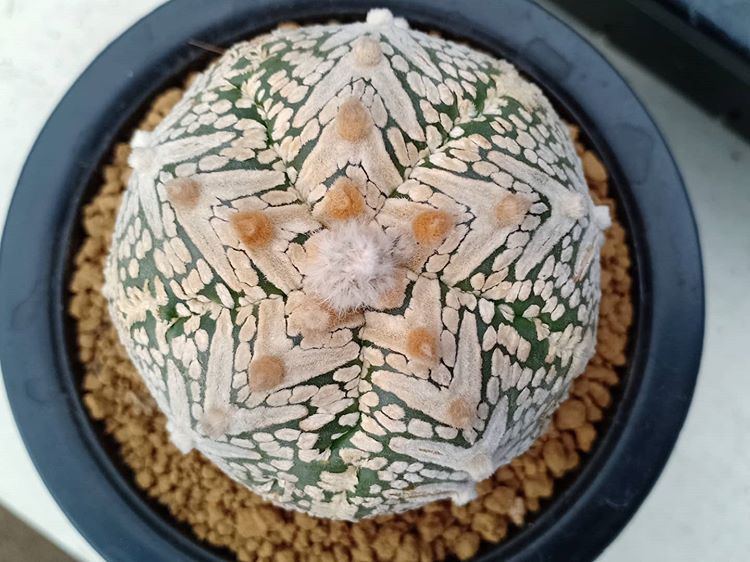
Since kabuto means astrophytum in Japanese super kabuto just means a super astro. It like comes from the fact that it has a dense mosaic of white spots all around the body. The white spots range from covering the entire plant to arranging uniformly to form patterns. Some notable ones are the ‘V-type’ in which the spot take on a ‘V’ pattern.
Astrophytum asterias miracle
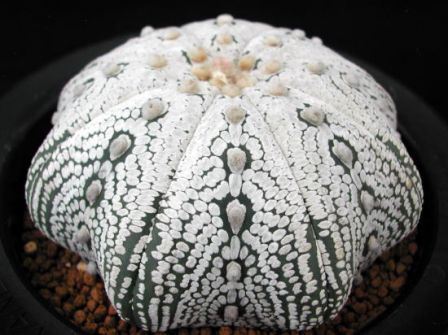
The miracle astrophytum has a rich history since it was found in the wild and brought to Japan in 1880s. You can read more about it here. It looks close to a super kabuto but has the following differences.
- It is usually larger in size.
- The speckles on the miracle are oval and paper-like unlike the ones on the super kabuto.
- When matured, it tends to take a shape of a star (but not all star shaped ones are miracles).
- The speckles also grow in size and get dense when matured
Due to cross breeding, the differences between them are blurred and it is pretty hard nowadays to identify a young seedling until the features get more prominent.
Rib variations
Astrophytum asterias cv. fukuryu
If you google fukuryu, the first Wikipedia page brings you to a page regarding Japanese special forces that were known as ‘suicide divers’. If you are thinking why the Japanese breeders named a plant after such an ominous concept – they didn’t. Fukuryu can be interpret many way and in the world as astrophytum, is actually written with two different forms in Japanese. The first one being 复棱 and the other 副棱. Let’s breaking the characters down
Fukuryu 1 – 复棱
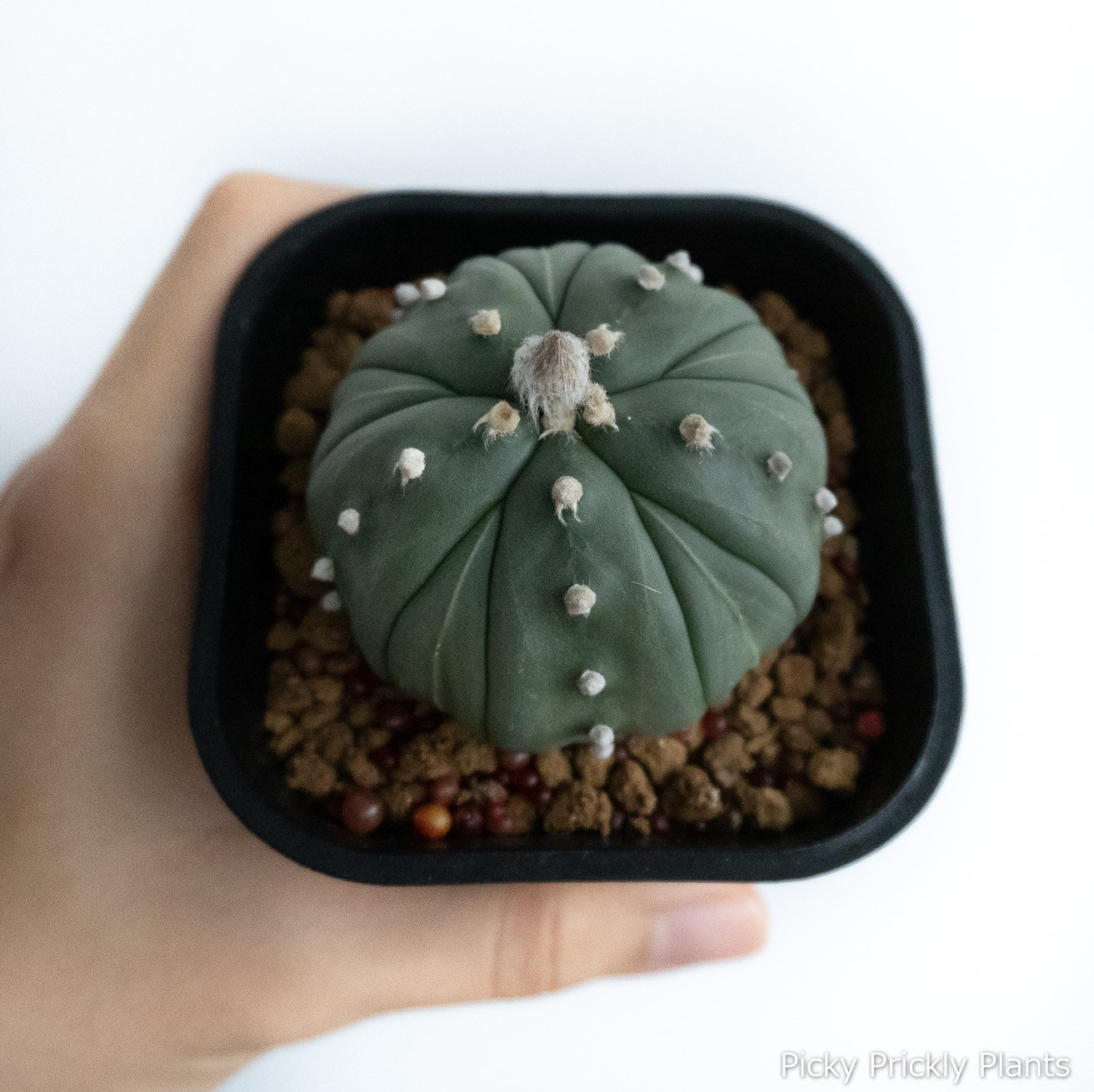
The first variation of fuku (复) means to repeat and 棱 means edge or ribs in our context. Putting them together you get repeated ribs. Looking at photo on the left, you can clearly see that for every rib, there is a repeated less developed rib without areoles that forms beside it. This creates the signature look for a fukuryu astrophytum.
Fukuryu 2 – 副棱
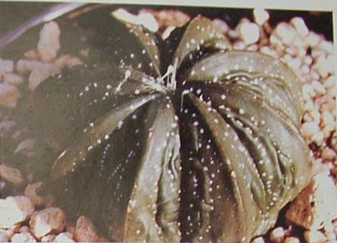
The second variation of fuku (副) means additional or auxillary. Together they point to astrophytums with additional ribs. The different between the former is that the ribs are not uniform and are all over the place. This form is usually more common for astrophytum myriostigma but sometimes get transferred to asterias when crossed.
Astrophytum asterias cv. ekubo
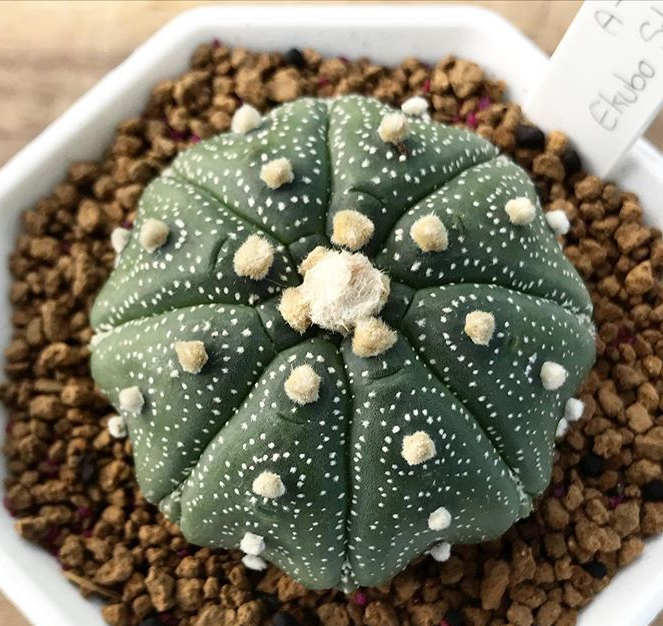
Ekubo (えくぼ) means dimple. So far the ones we saw above have more or less a smooth rib from the center of the plant all the way down to the roots. However, in some plants, there could be little indentations below the areoles that look like dimples. These lines are usually small and do not span the width of a rib.
Astrophytum asterias cv. kikko
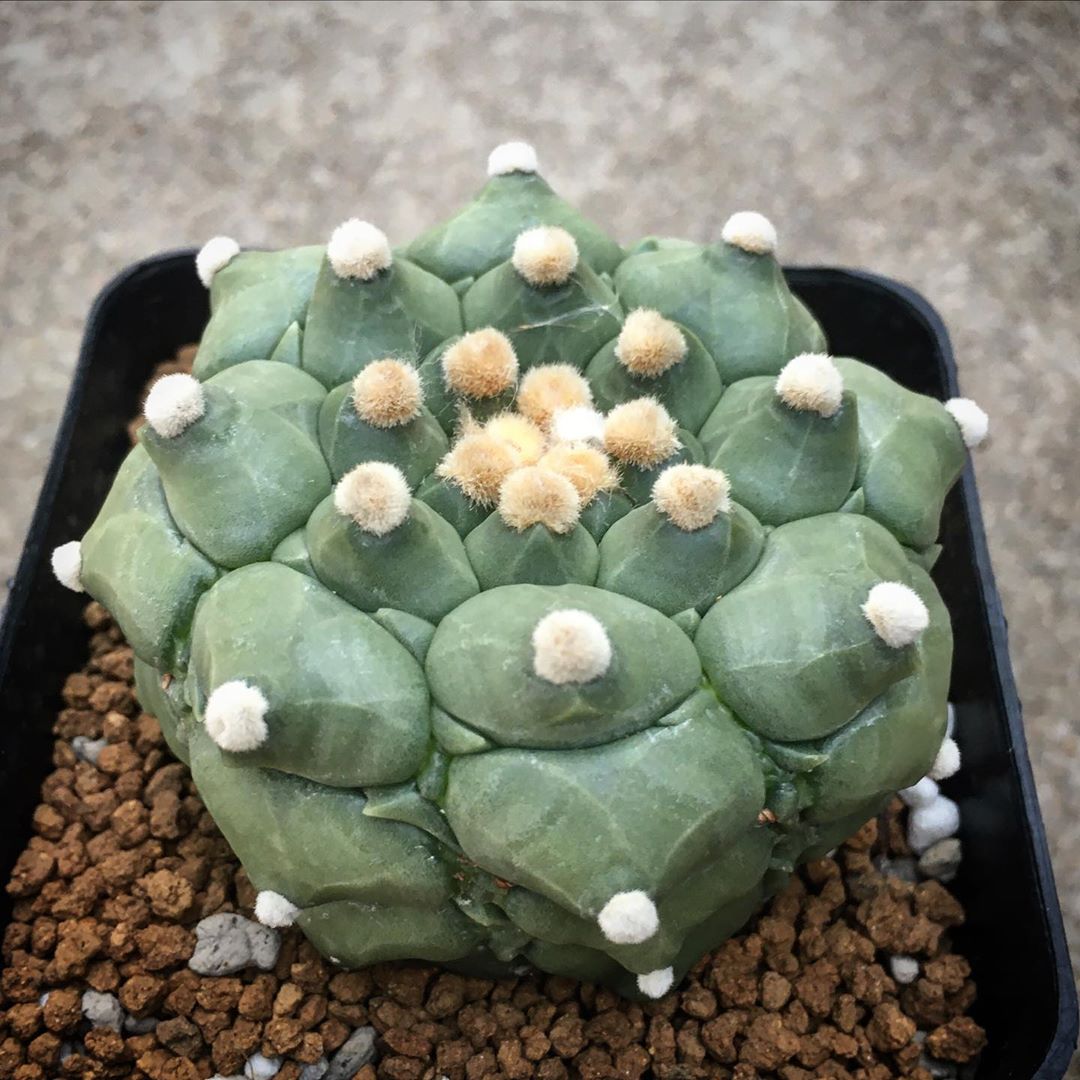
Kikko (亀甲) refers to a type of samurai armor with hexagonal shaped armor plates. When the indentations of an ekubo gets deeper and wider, they can form interesting shapes. Because of how varied the indentations can form, the kikko has many looks. Here are just some of them.
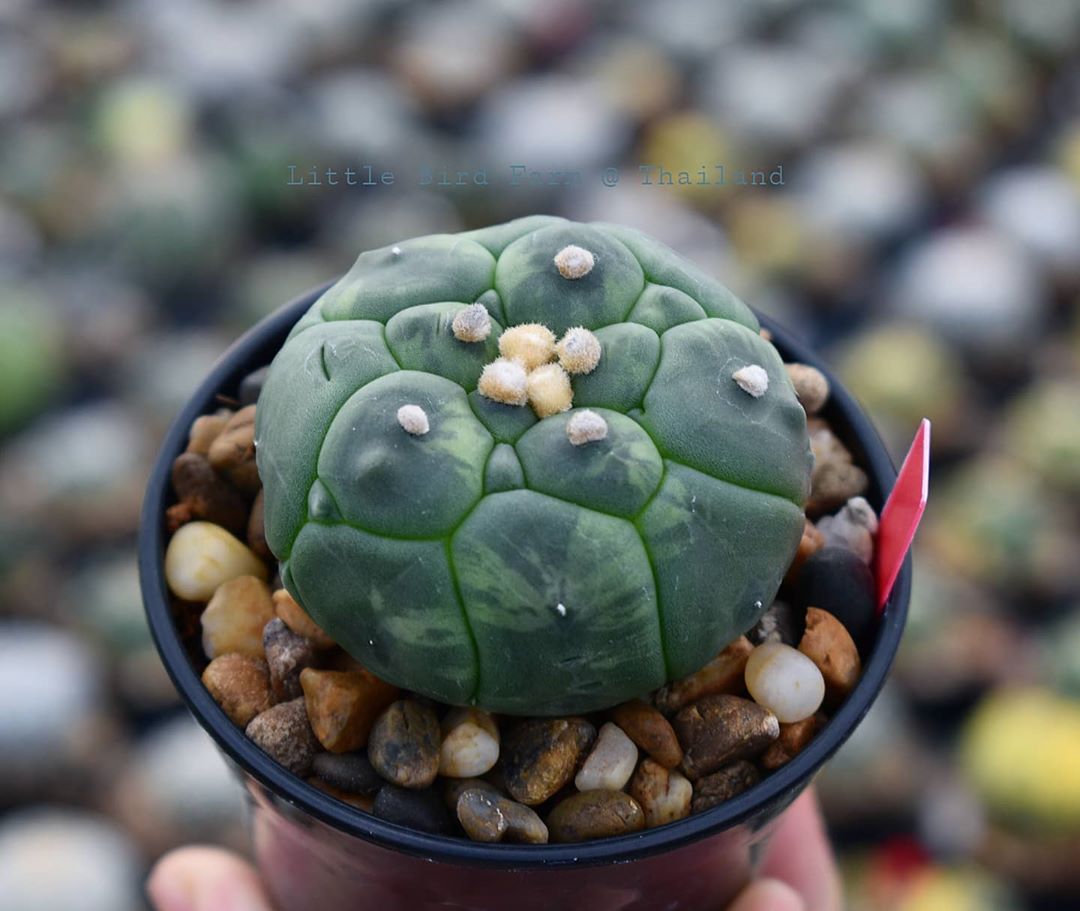
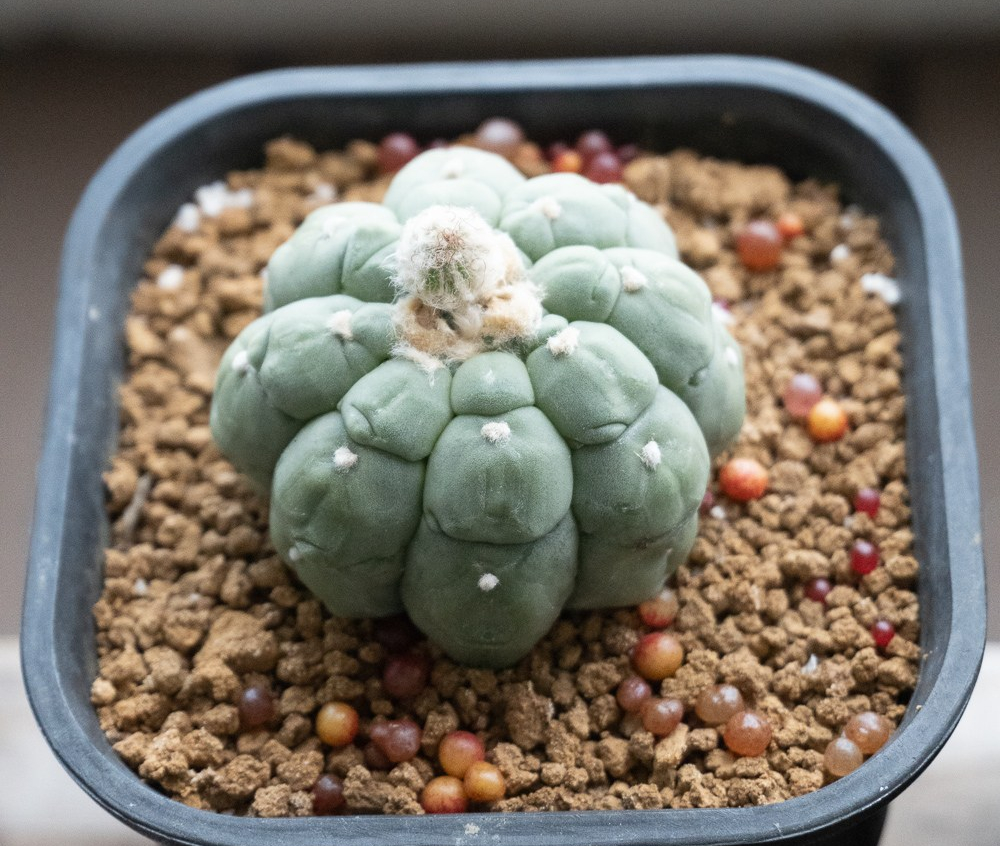
Astrophytum asterias cv. star shaped
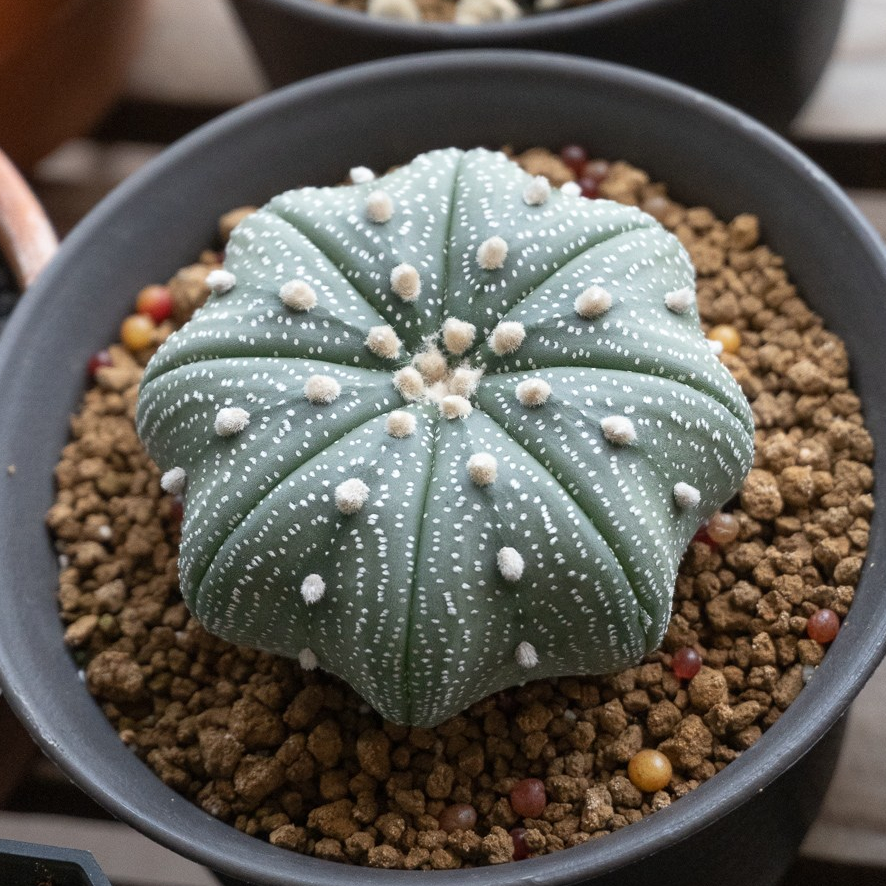
From the top, the astrophytum looks like a star. This happens when the ribs are concave towards the centre. The one we have in our collection does not have a super defined star shape but it could be bloated due to us giving it too much water.
Areoles variations
Astrophytum asterias cv. rensei
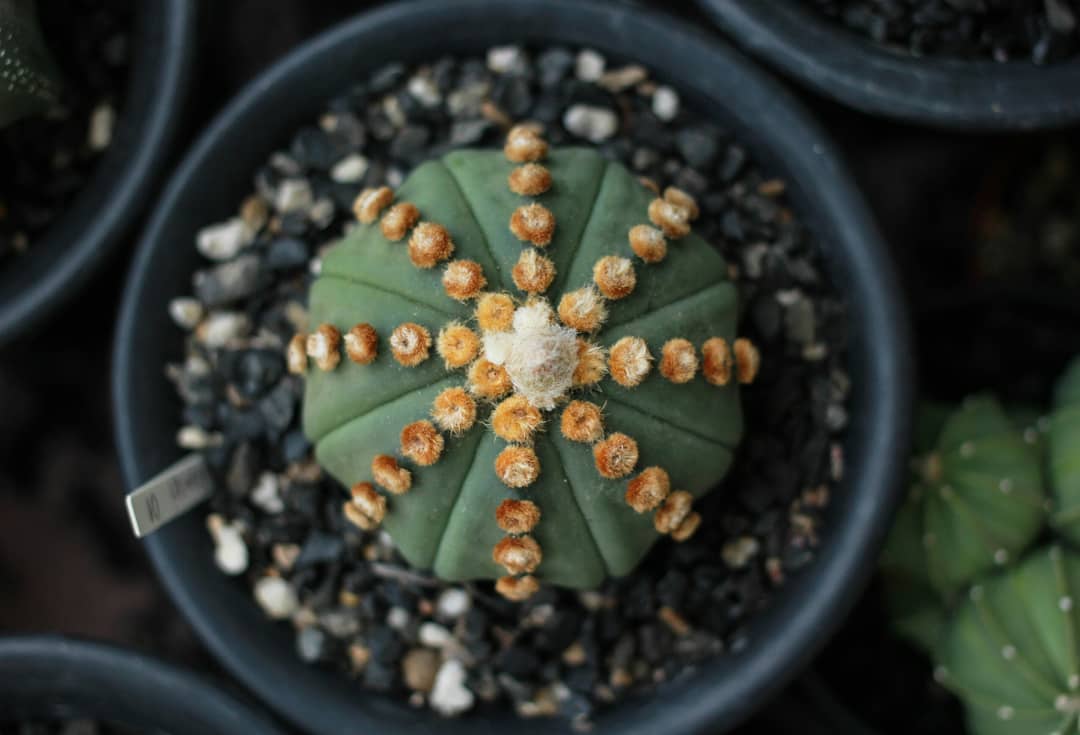
Rensei (連星) means either “chained stars” or “joined heart” in Japanese. It is used to describe an cultivar that has areoles close together till they form lines from the centre to the base.
Astrophytum asterias cv. rasen
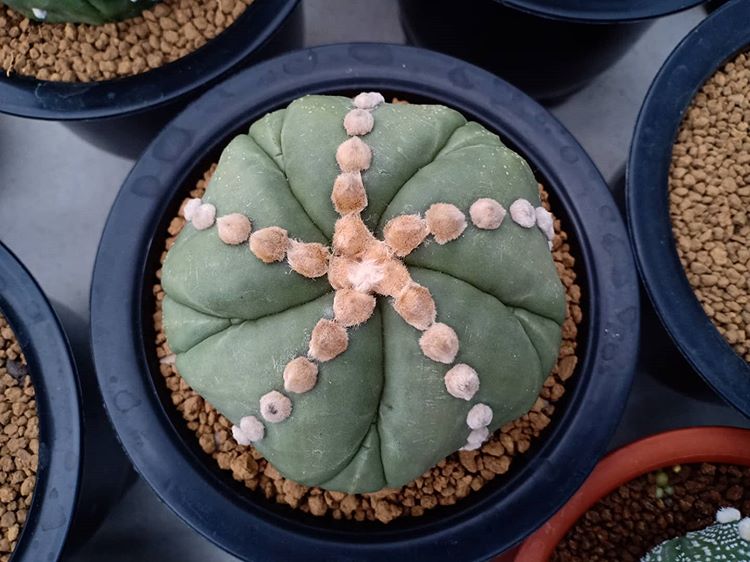
Rasen (螺旋) means spiral. As you can guess, it is used to label astrophytums that have areoles which line up and twist about the centre of the plant which forms spirals.
Astrophytum asterias cv. ooibo
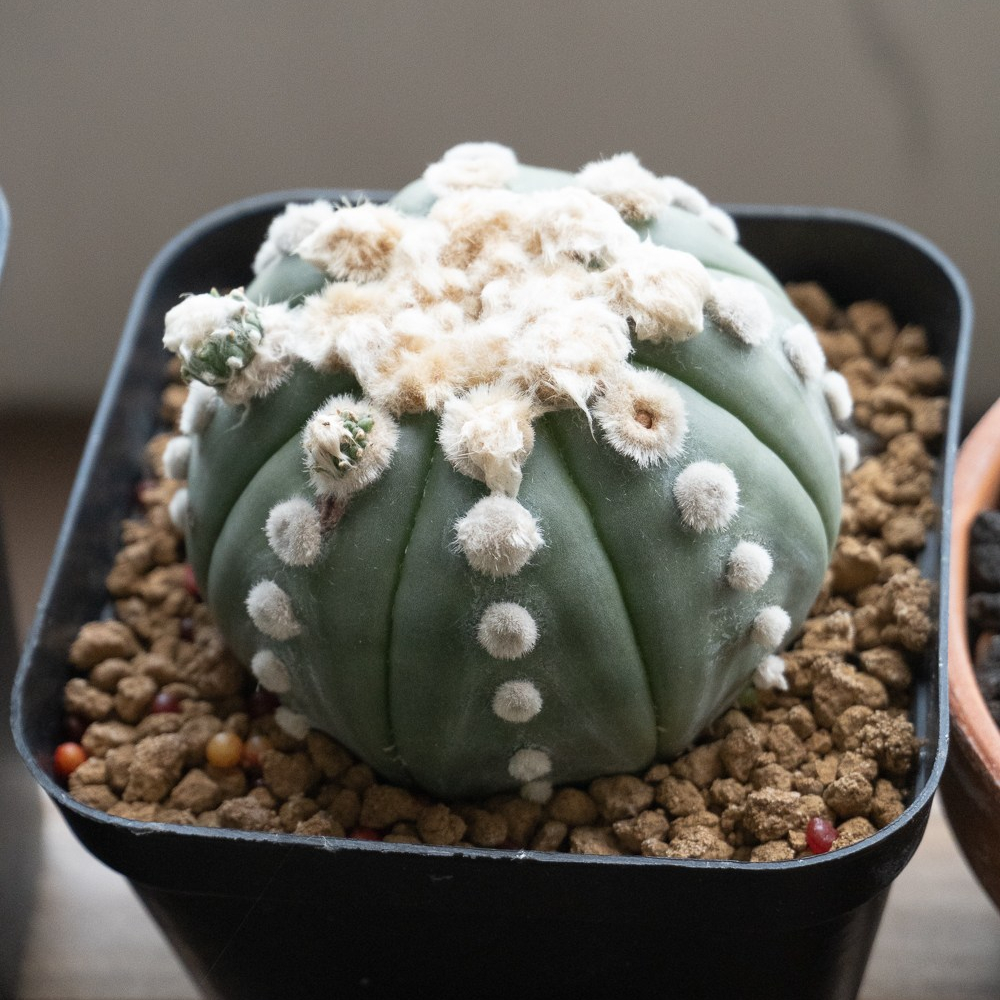
Ooibo (大疣) means big wart. Oh yes, warts that grow on our skins. The ‘warts’ actually refer to the areoles. It is hard to define how large an areole needs to be to be considered an Ooibo. The one we have has areoles that are as big as 1 cm when spread out. And it seems like the areoles get bigger as it grows older.
Astrophytum asterias cv. hanazono
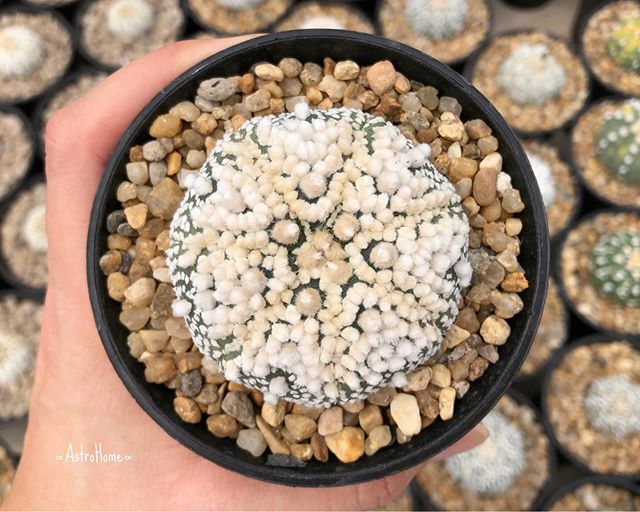
Hanazono (花園) means ‘garden of flowers’. Instead of literally referring to the bright flowers of the astrophytum, it is used to describe when the areoles on an astrophytum grow non-uniformly and wild. From far, it kind of looks like a garden of white flowers in a backdrop of green.
Flower variations
Astrophytum asterias cv. akabana
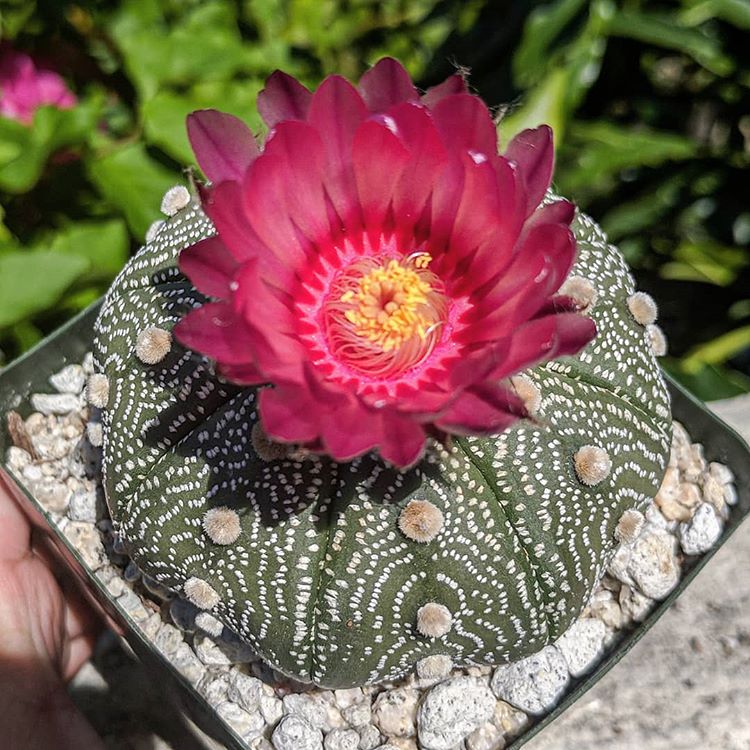
The flowers of the astrophytums are mostly yellow. However, there some some selected breeds that are pink and also red. Akabana (赤花) literally means ‘red flower’. The body looks like a normal astrophytum so it is really hard to tell until they flower. Good luck trying to find one! You best bet is to look for a trusted nursery that actually has photos of them in bloom.
Astrophytum asterias cv. showa
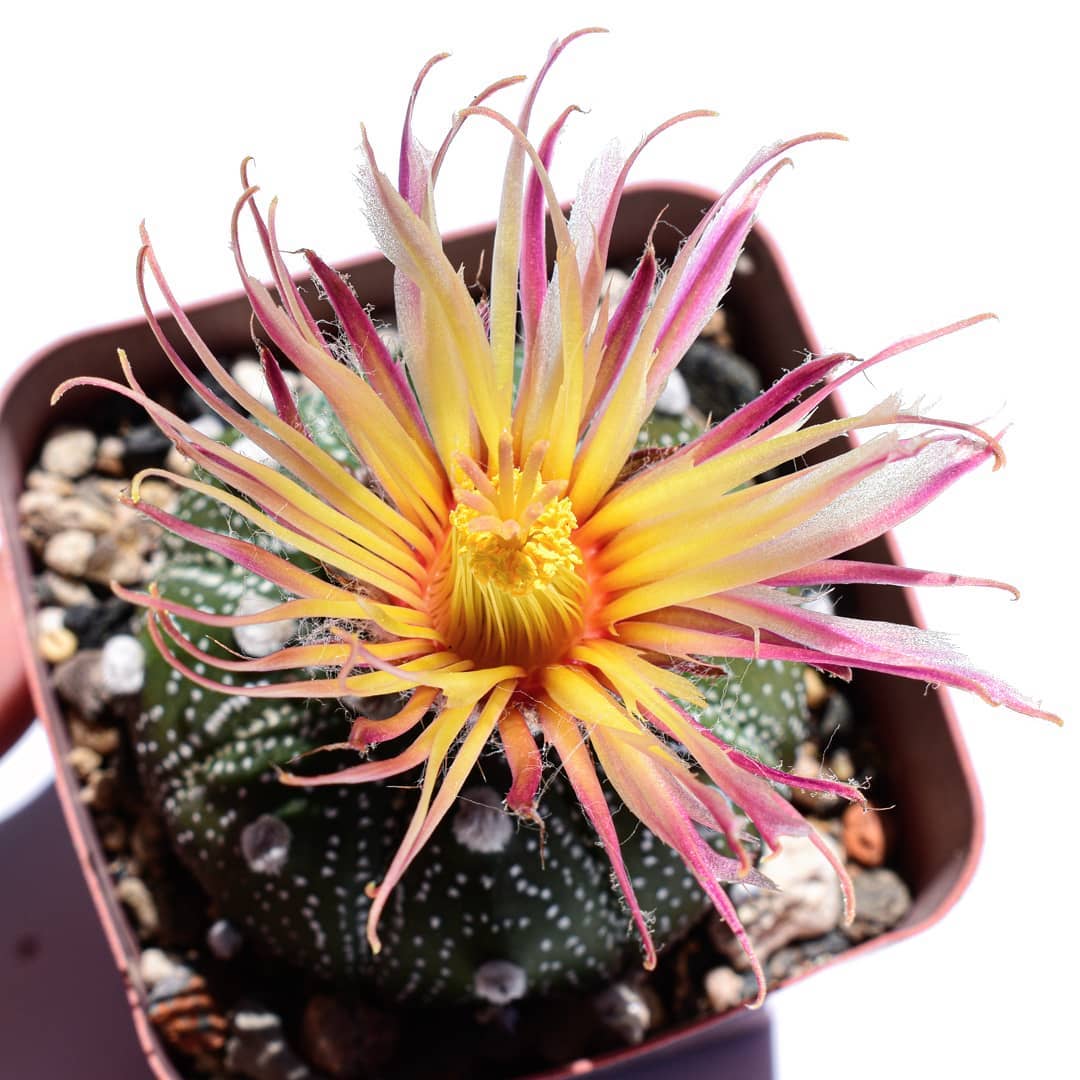
Showa (昭和) refers to an era in Japan that spanned 1926–1989. My guess is that this breed was used to commemorate the Emperor of the time. The petals of a showa are thin and gives the bloom some similarities to fireworks. Again, like the akabana, it can be hard to get hold of one.
Are astrophytums asterias good beginner plants?
Yes, definitely! If you are just starting out, there are many inexpensive varieties out there. They are low maintenance plants that can survive weeks without water. If you are interested to start the journey, take a look at our introduction on taking care of astrophytums asterias. In the post, we also share some tips on getting your hands on some of the exotic cultivars you saw earlier. That’s all for now and hope one of these adorable plants caught your eye.

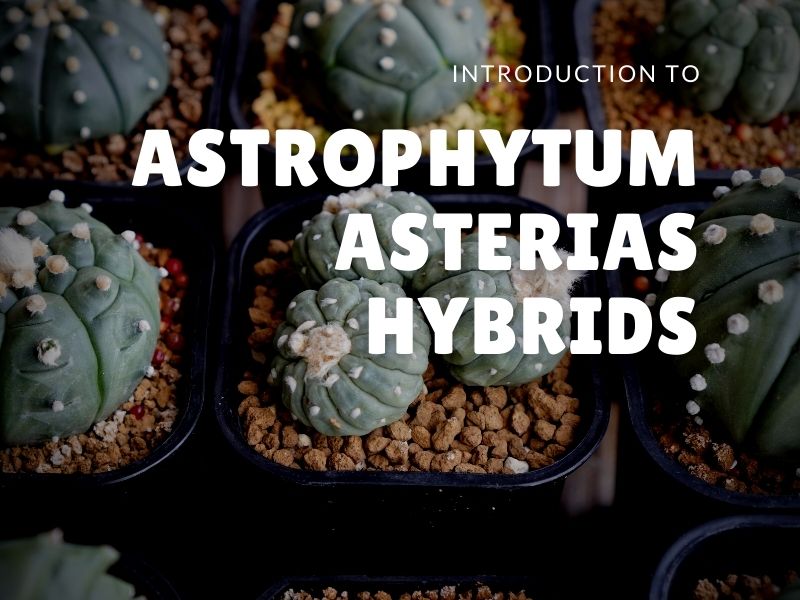
Very good article and helpful for a newbie collector like me. I want to start growing the Super Kabuto by seed and learning as much as I can. Are these names all Japanese based because they hybridized them? Thanks.
Thank you for the comment!
If you are interested, you can read this article on the history of astrophytum in Japan. It tells the story of how the plant was introduced to Japan and how it was cultivated by the nurseries there.